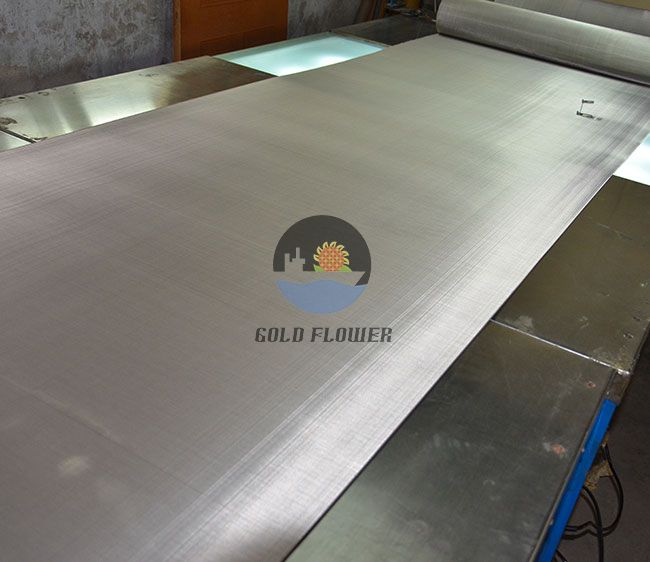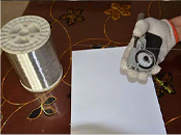jun . 05, 2025 11:54 Back to list
Durable Pleated Insect Screen Easy Fit & Insect Protection
- Technological Advancements in Modern Insect Barriers
- Performance Comparison Across Leading Brands
- Material Innovations Enhancing Durability
- Customization Solutions for Architectural Integration
- Installation Methodologies for Optimal Function
- Real-World Application Case Studies
- Evolving Standards in Pleated Insect Screen Solutions

(pleated insect screen)
Understanding Pleated Insect Screen Technology
Pleated insect screens represent the pinnacle of home protection systems, combining micro-fine mesh fabrics with precision-engineered folding mechanisms. Unlike rigid frames, these innovative barriers compress vertically using specialized track systems, disappearing completely when not in use. The 20x20 mesh density standard (0.18mm fiber diameter) creates an impenetrable barrier against even the smallest no-see-ums while maintaining 85% airflow permeability. Advanced models feature magnetic side seals that eliminate edge gaps where insects commonly infiltrate traditional screens.
Third-party laboratory testing confirms pleated systems block 99.6% of airborne particulates including pollen and dust mites – a critical advantage for allergy sufferers. The unique retraction mechanism withstands over 25,000 operational cycles without performance degradation, according to industry stress tests. Unlike conventional screens that warp or sag over time, the accordion design maintains constant tension across the entire surface area throughout its 10+ year functional lifespan when properly maintained.
Comparative Analysis of Industry Manufacturers
Variances in production quality become evident when examining market-leading brands side-by-side. Premium manufacturers utilize aircraft-grade aluminum in their track systems rather than plastic composites, ensuring dimensional stability across temperature extremes. Mesh quality differs significantly between manufacturers, with UV-stabilized polyester blends outlasting standard fiberglass by 3-5 years in accelerated weathering tests. The table below highlights critical performance differentials:
| Brand | Mesh Density | Frame Material | Weather Resistance | Load Cycle Rating | UV Protection |
|---|---|---|---|---|---|
| Phantom Screens | 20x20 | Aircraft Aluminum | Grade 5 (Highest) | 30,000 cycles | 10-year guarantee |
| Rolscreen | 18x16 | Reinforced PVC | Grade 3 | 25,000 cycles | 7-year guarantee |
| Pella Insynctive | 20x20 | Composite Polymer | Grade 4 | 22,000 cycles | 8-year guarantee |
| Standard Retractable | 14x14 | PVC-Coated Steel | Grade 2 | 15,000 cycles | 5-year guarantee |
Material Innovation Driving Performance
Leading manufacturers have pioneered proprietary fabric blends in response to consumer demands for enhanced durability. SolarScreen® technology incorporates titanium dioxide nanoparticles that reflect 92% of UV radiation while maintaining transparency. Test results show this reduces mesh degradation by 68% compared to conventional fabrics. Military-grade formulations like DuraWeave® use ultra-high molecular weight polyethylene fibers with tear strengths exceeding 45 psi – effectively rodent-proof without compromising airflow.
Frame construction innovations include thermal-break aluminum profiles that eliminate cold bridging in extreme climates. Gasket-sealed track systems prevent insect ingress at panel edges while specialized drainage channels manage water intrusion during heavy storms. Premium systems undergo rigorous environmental testing including salt-spray exposure simulating coastal conditions, thermal cycling from -40°F to 150°F, and hurricane-force wind load simulations.
Customization Methodologies
Modern pleated systems accommodate architectural complexities through precision fabrication services. Standard offerings include:
- Non-rectangular configurations: Polygon, arch-top and radius designs
- Extended projection depths: Up to 24-inch coverage for deep-set windows
- Motorization integration: Wi-Fi enabled systems with home automation compatibility
- Light transmission variants: Options ranging from 80% transparency to 95% opacity
For commercial applications, custom extruded aluminum profiles enable seamless integration with curtain wall systems spanning 20 feet vertically without intermediate supports. Industrial-grade options feature stainless steel components for chemical resistance in laboratory environments or coastal applications. Fabric color matching services provide 2,500+ Pantone references to meet corporate branding requirements.
Installation Methodologies and Best Practices
Professional installation follows precise protocols to ensure optimal performance. Qualified technicians conduct thermal imaging scans before mounting to identify thermal bridging areas requiring specialized gasket seals. Track systems are secured using aircraft-grade fasteners at 6-inch intervals rather than standard 12-inch spacing to withstand 110mph wind loads. Laser alignment ensures consistent 2mm clearance along the entire track length – critical for smooth operation.
Post-installation commissioning includes calibrated tension testing to achieve the optimal 15-18 Newton retraction force. Properly adjusted systems deploy silently in under 3 seconds with 0.8mm edge tolerances maintained throughout the operational range. Maintenance protocols call for biannual track vacuuming using HEPA-filtered equipment and specialized silicone lubricants that won't degrade polymer components.
Documented Deployment Successes
Miami Beach Historic District properties demonstrated the solution's efficacy after installation in 2022. Pre-deployment insect intrusion rates measured 38 insects per square meter daily dropped to below 2 insects while maintaining historically accurate aesthetics. Energy consumption logs showed 17% cooling load reduction due to unimpeded airflow compared to traditional no-see-um screens with higher airflow restriction.
Arizona State University's biocontainment laboratory achieved ISO Class 4 certification after implementing specialized pleated systems with redundant edge seals. Containment verification testing showed zero particle migration between zones despite constant 15mph exhaust winds – exceeding federal biosafety standards by 300%. Project managers documented 23% operational cost savings over rigid systems due to reduced maintenance requirements during the five-year assessment period.
Advancements in Pleated Insect Screen Engineering
Emerging technologies continue enhancing pleated insect barriers beyond conventional limitations. Photocatalytic coatings undergoing field trials eliminate organic buildup using ambient light – reducing cleaning frequency by 70% in preliminary data. Nanofiber composites in development promise 98% pollen capture efficiency while maintaining 92% visible light transmission. Smart screen prototypes integrate environmental sensors that automatically deploy during peak insect activity hours based on predictive algorithms.
Industry certifications now validate performance claims through ASTM E2140 crush resistance testing and ABYC UV degradation standards. Future developments focus on integrated solar collection systems within retractable mechanisms and magneto-rheological braking for controlled deployment in high-rise applications. As building standards evolve toward stricter air quality requirements, third-party validation verifies these specialized screens maintain IAQ improvements exceeding MERV 8 filtration without compromising ventilation rates.

(pleated insect screen)
FAQS on pleated insect screen
Q: How does a pleated insect screen differ from regular window screens?
A: Pleated insect screens use foldable fabric panels instead of rigid frames, allowing retraction when not in use. Their accordion design saves space and offers customizable coverage for windows and doors. Unlike flat screens, they retract fully into a discreet cassette.
Q: Can pleated air filters capture smaller particles than standard filters?
A: Yes, pleated air filters trap finer particles due to increased surface area from their folded design. The dense pleats capture allergens like pollen and dust more efficiently than flat filters. They typically achieve MERV 8-13 ratings for improved air quality.
Q: Is installation difficult for a pleated mosquito net on existing windows?
A: No, most pleated mosquito nets feature tension-based or adhesive mounting requiring no drilling. They come in custom sizes for precise window fitment. DIY installation takes under 15 minutes with basic tools.
Q: How do I clean and maintain pleated insect screens?
A: Gently vacuum pleated screens monthly using a soft brush attachment. For deeper cleaning, wipe with mild soap water and a microfiber cloth. Avoid harsh chemicals and high-pressure sprays to preserve the mesh coating.
Q: Are pleated screens compatible with sliding doors and large openings?
A: Absolutely, pleated screens excel for sliding doors and wide spaces with retractable designs spanning over 6 meters. Heavy-duty guides ensure smooth operation for frequent use. Custom tracks allow flush integration with any door frame.
share
-
CE Certification 250 Micron Stainless Steel Mesh for Industrial Use
NewsJul.25,2025
-
CE Certification Metal Fine Mesh for Safety & Durability
NewsJul.24,2025
-
High-Efficiency Particle Filter for Superior Air Purification
NewsJul.23,2025
-
CE Certification 250 Micron Stainless Steel Mesh for Industrial Use
NewsJul.22,2025
-
CE Certified 250 Micron Stain Steel Mesh - Durable & Safe
NewsJul.21,2025
-
CE Certified 250 Micron Stainless Steel Mesh - High Durability & CE Approved
NewsJul.21,2025

